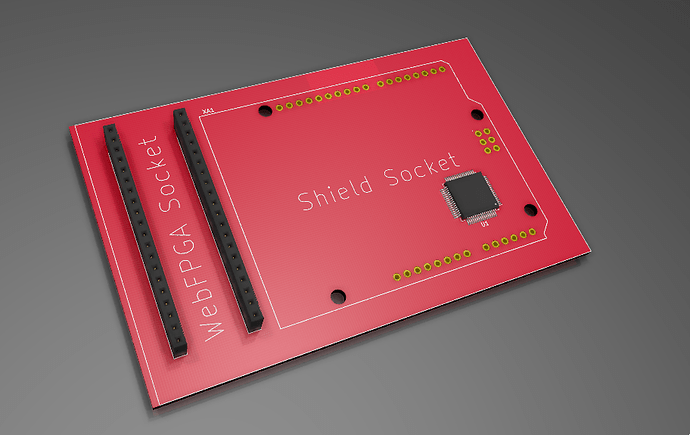Hi all,
I’m opening up a discussion on the development of an Arduino adapter board. There’s been at least three inquiries about compatibility so far.
Honestly, we don’t think that it would be difficult to design an adapter board that sits between Arduino shields and our device. It would pretty much consist of level-shifters and analog-to-digital chips – on a correctly dimensioned PCB and pin layout. This would easily cost less than $10. If enough people are interested, we might create a reward tier for it before our campaign ends – otherwise, we’ll set up a sales site for after our KickStarter launches.
We’re going to whip up a preliminary design this weekend. Ongoing feedback, requests, or concerns would be well appreciated!
Also I would like to get some clarifications on what people want. In my mind, I see two different boards.
- A board that sits between our WebFPGA device and your existing Arduino shields.
- A board (really, a glorified socket) that allows the WebFPGA device to sit on top of an Arduino.
Let me know your thoughts,
Ryan

